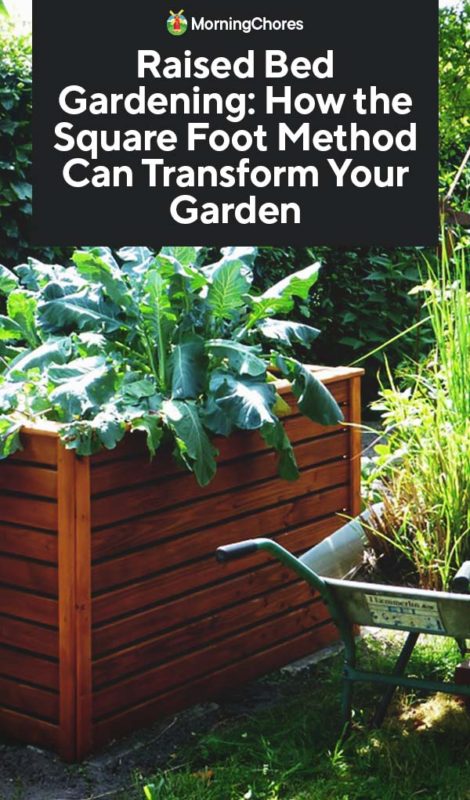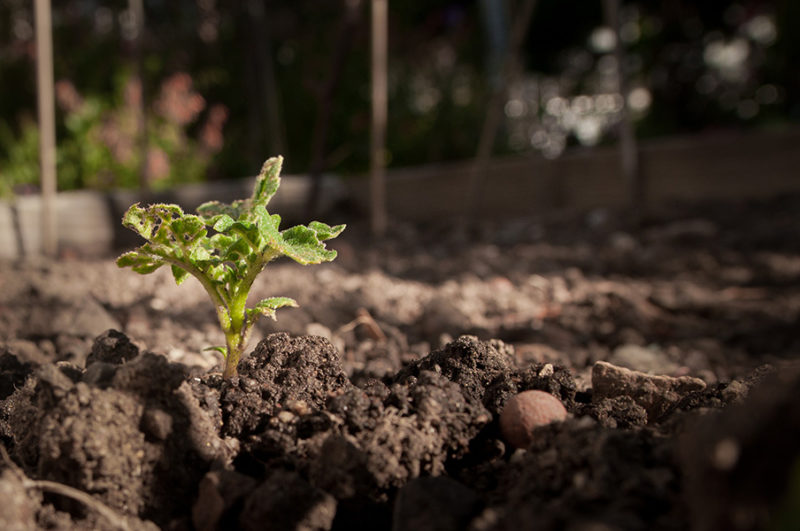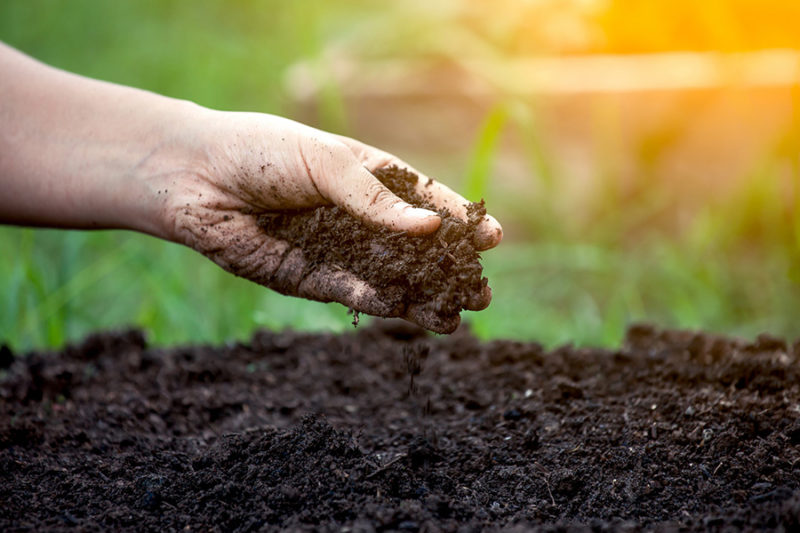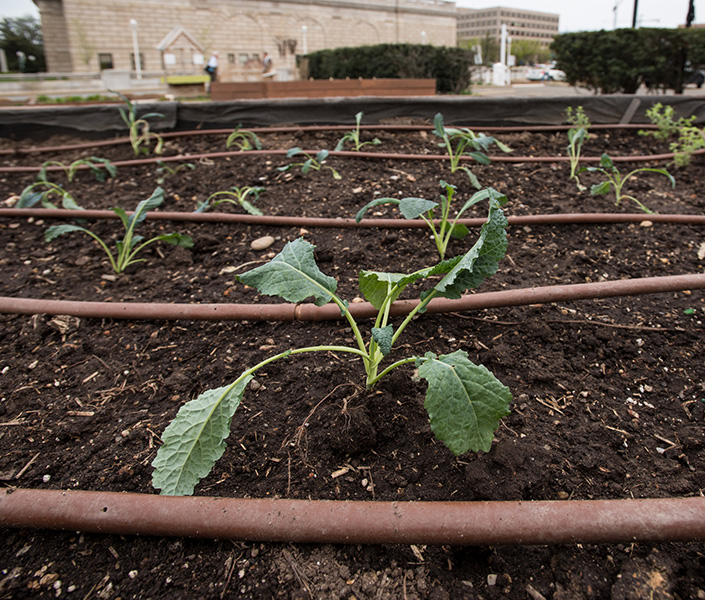Square Foot Gardening Fall Crops
When I first began digging in the dirt years ago, I wasn't sure how to make the most of my less-than-ideal yard. The area was mostly shaded and had poor soil, but I was determined to make it work.
I was also overwhelmed when I started out. Seed packets instructed me to plant in rows, but I didn't have a tremendous amount of space and
I happened upon a book on Square Foot Gardening (SFG), and my gardening life forever changed. The idea that I could organize my dirt patches in neat squares seemed revolutionary. A tidy garden seemed more approachable.
I started playing around with the SFG method in my garden. I installed grids and grew more than just tomatoes in my partially shaded patch of peace. Later, I set up a little seating area so I could hang around in the garden even if I wasn't weeding or planting. Each year I discovered new techniques and realized my many mistakes.
I went on to become a Certified Square Foot Gardening Instructor and set up educational booths at local environment day events. I set up a community garden space at a local Senior's Club and taught square foot gardening courses. The outdoor area featured SFG grids and flourished so much that it got a lot of attention. We grew a lot of food in that space that summer. The radishes were almost as big as golf balls but still tasty, and the sunflowers were massive.
Today, in my new home that I share with my husband, I have a front-yard garden comprised of raised beds with permanent grids. For the home gardener, I believe the SFG method is truly the way to go. It's easy to learn, set up, and maintain and is an excellent choice for introducing children and teens to gardening. SFG is also incredibly adaptable depending on the amount of space and time you have to commit to the hobby.

Why Raised Beds?
Raised beds are an essential part of square foot gardening. With raised beds, there's no need to worry about the quality of soil in your area. You create your own ideal soil mix that's ready for growing and weed-free.

Raised beds also make it easier to weed, harvest, and otherwise maintain your crops. You can build beds from scratch or buy them ready-made and choose the right height for your needs.
A raised platform for growing reduces the risk of back strain since bending down isn't necessary with the right sized bed. My beds, for instance, were built almost at waist height (I'm short, so it's not that tall!), so I don't have to kneel or bend too much. Years from now, I bet my lower back will thank me.
Another surprising bonus is that raised beds look beautiful. Unlike an in-ground series of rows, I'm not concerned about people complaining about my front-yard beds. They look great. With the organized grids atop the beds, my garden looks clean even when everything is starting to die over in the fall.
There are so many advantages to the square foot method of gardening. It would be a long list if I included them all, but here are my main reasons for preferring it over other types of cultivation like row gardening.
Efficient Use of Space

Square foot gardening drastically reduces the amount of space required to grow crops compared to traditional row gardening. I love that in a single 4×4-foot bed, I can grow a multitude of vegetables, from several tomato plants to a whole bunch of carrots.
Minimal Weeding
Because everything is spaced close together, square foot gardening requires less weeding. The close spacing suffocates weed growth and drastically reduces the need for constant upkeep and weed pulling.
Conserves Water
The close spacing also helps to retain moisture. A bit of mulch helps keep the soil moist and keeps my plants happy.
Easy Crop Rotation
Rotating crops each year can be a bit overwhelming, but with a bit of planning, the square foot gardening method of organizing my plants makes it easy to rotate crops and prevent disease and pest problems.
Easy Succession Sowing
This is probably one of my favorite aspects of square foot gardening. It's super simple to succession sow. Once I've harvested a square, I immediately plant something else. Whether it's quick growing radishes or transplanted cabbage, my garden is on a constant rotation, and there's always something to harvest.
Organization
I love that my garden feels so organized. It's easy to manage and spot problems early, too. When sowing seeds, I can immediately tell that some have not sprouted. There's no guessing involved because the spacing rules allow me to see what's coming up straight away. If I plant 9 beans in a square, for instance, I can instantly tell when a few seeds have failed to germinate.
Visual Appeal
I don't care too much about what a garden looks like, but it's nice when a garden looks neat, tidy, and attractive. It makes me want to hang out there a lot more. An SFG garden has visual appeal and will often spark interest from gardeners and non-gardeners alike. I once had a pizza delivery lady ask me about my square foot garden, and I was eager to share some tips with her.
Adapdability
You don't need to grow your square foot garden in a waist-high 4×4-foot bed. You can use the method as a guideline for growing in containers or to grow in a narrow plot that measures 8×2-feet. The method can be adapted to accommodate elderly and mobility impaired individuals. Make a tabletop square foot garden so wheelchair users can comfortably garden. Smaller sized gardens are perfect for children and you can even outfit boxes with wheels so that they can be moved around a property. There are so many possibilities!
The Structure
The first step to raised bed gardening is building or buying a structure to contain your garden. There are lots of options online and at your local garden center if you want to buy a container.
Building your own raised bed is not difficult, and you can find endless DIY ideas online that fit any budget.
The Soil Mix
If you're going to build a raised bed above your existing land, the soil mix you use is critical. The SFG method calls for equal parts peat moss, compost, and vermiculite.

The trio of ingredients ensures that the soil retains moisture, drains well, promotes aeration and is nutrient rich. There's an initial investment required to introduce healthy soil to your beds.
It can be costly, so it's important to note that if this blend sounds unattainable to you, you can use a combination of different composts and soil and achieve roughly the same results. That's what I did. It's a little bit more challenging, because compost does have a tendency to compact and arrive clumpy, but over time I've amended the soil and built it up. I continue to do so every year.
An initial investment in soil health, however, is where it ends. Once you've filled your beds with the products mentioned above, you won't need to replenish the peat or vermiculite. It is, however, a good idea to start composting, so you have some on hand when needed. Each time you harvest a square, amend the soil with some homemade compost and re-plant as you see fit.
If you're concerned about adding peat moss to your garden, consider other mediums such as coco coir, which has many of the same properties (except coir will break down over time). Not able to find vermiculite in your area? Use perlite instead.
Spacing
I suggest getting yourself a copy of the Square Foot Gardening book because it contains such great information, including spacing guides. With practice, though, you'll quickly learn the proper spacing for each square foot. You can use a handy online spacing reference guide to help.
I'm never afraid to experiment with spacing. I'll plant certain varieties a little closer to see what happens to give them room to breathe if the spacing rules didn't produce thriving plants. A few common spacing examples include:
- Carrots – 16 per square foot
- Beets – 9 per square foot
- omato – 1 per square foot
Some plants like squash require more space than a single square foot, but certain varieties can be grown vertically to save space horizontally.

So, does the square foot gardening method intrigue you? We would love to hear about your SFG experiments and what you like best about this raised bed gardening method.

Was this article helpful?
Yes No
Square Foot Gardening Fall Crops
Source: https://morningchores.com/square-foot-raised-bed-gardening/
Posted by: couturesaut1950.blogspot.com

0 Response to "Square Foot Gardening Fall Crops"
Post a Comment